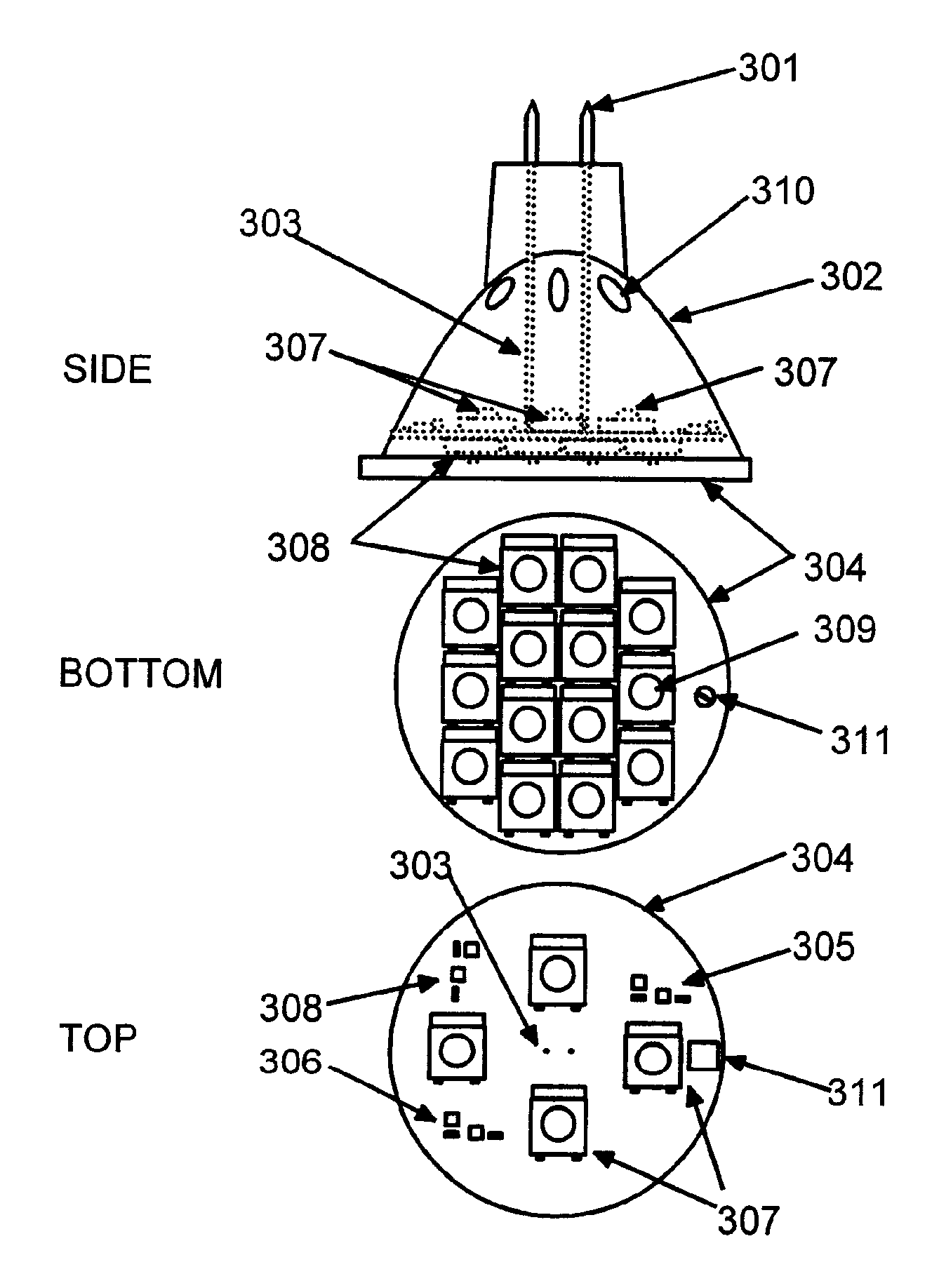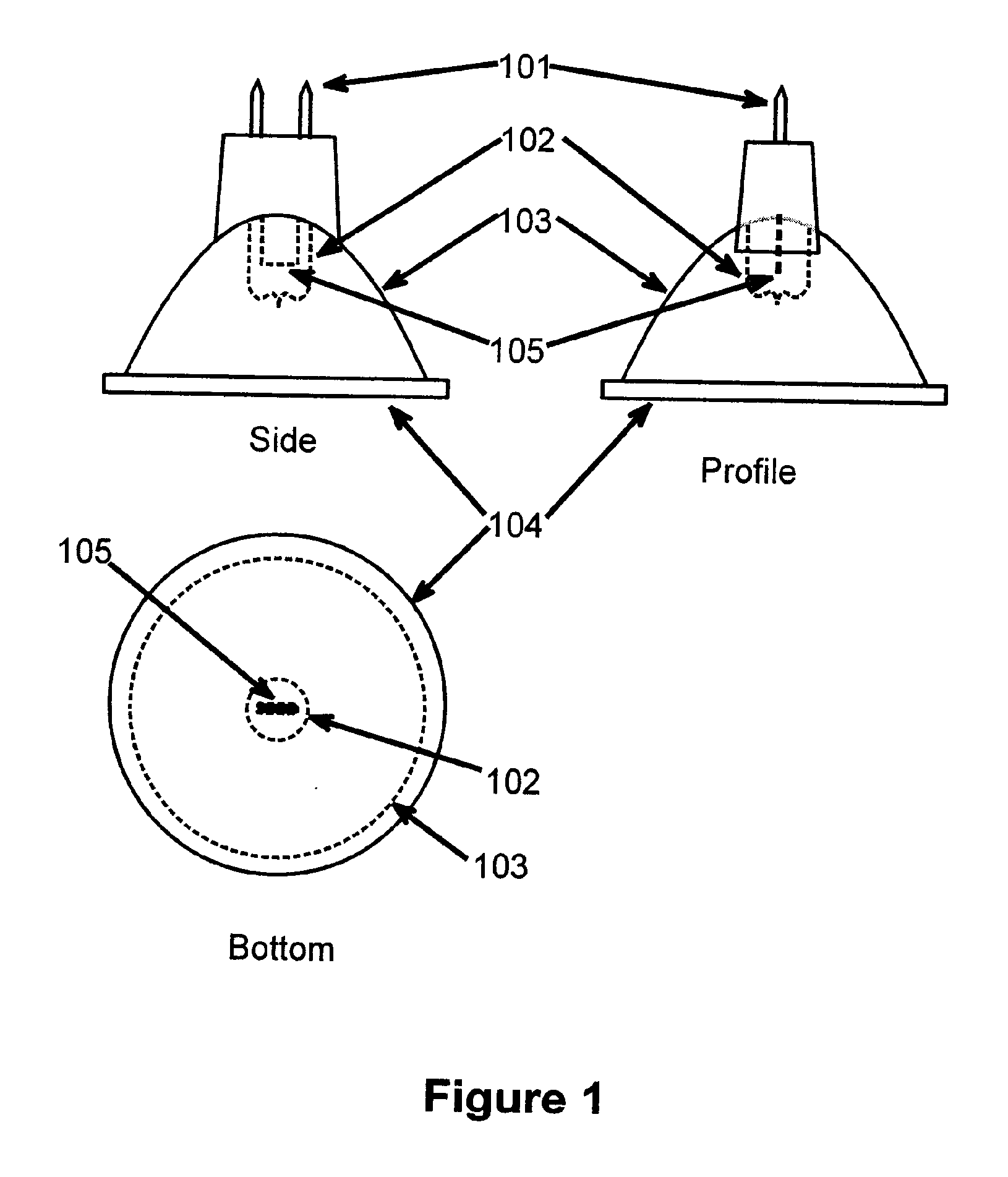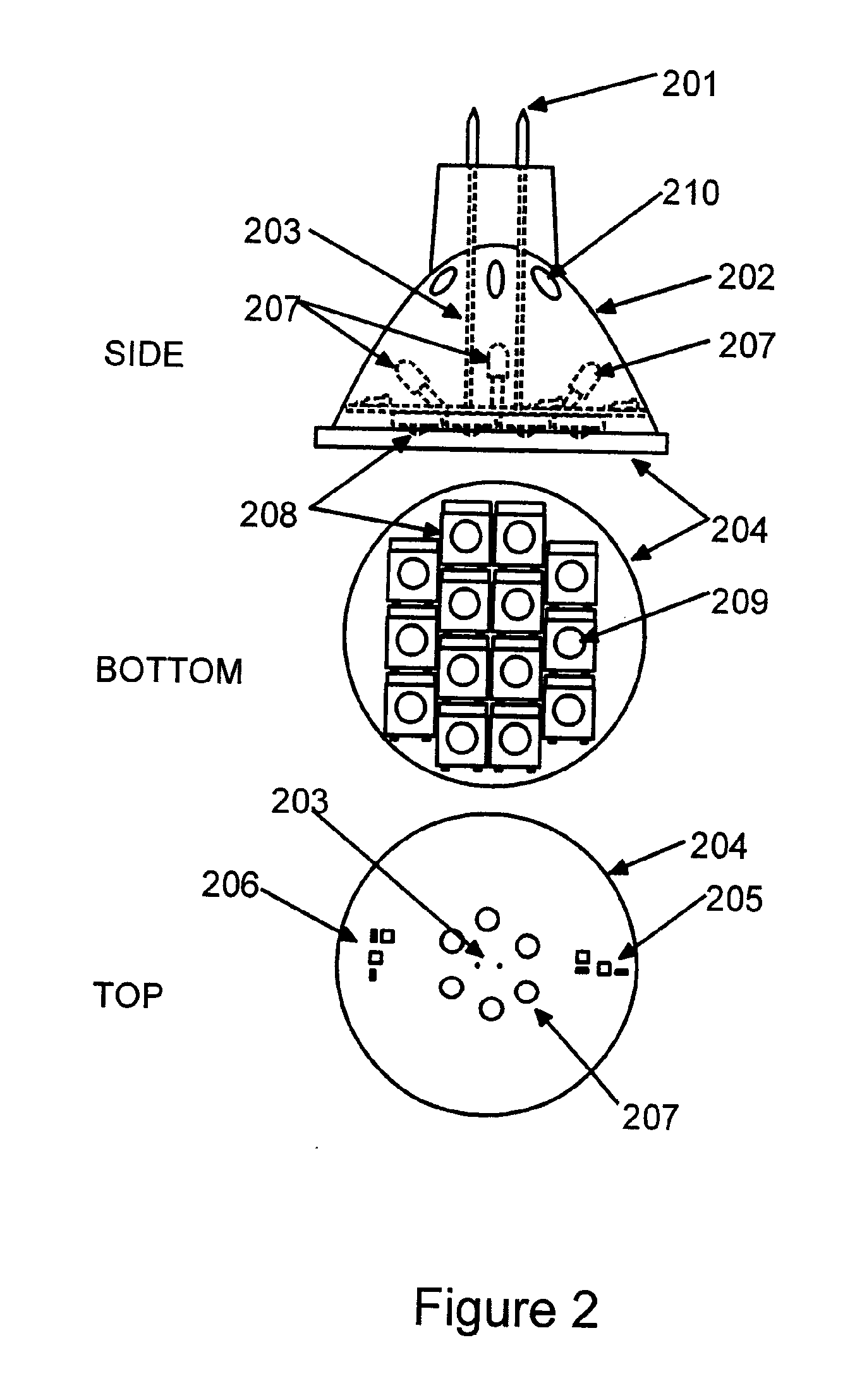Light Emitting Diode Replacement Lamp
a technology replacement lamps, which is applied in the direction of lighting and heating apparatus, instruments, process and machine control, etc., can solve the problems of considerable heat, considerable waste, and substantial current consumption, and achieve the effect of increasing the temperature and reducing the resistance of light emitting diodes
- Summary
- Abstract
- Description
- Claims
- Application Information
AI Technical Summary
Benefits of technology
Problems solved by technology
Method used
Image
Examples
Embodiment Construction
[0047]While this invention is susceptible to embodiment in many different forms, there are shown in the drawings, and will be described herein in detail, specific embodiments thereof with the understanding that the present disclosure is to be considered as an exemplification of the principles of the invention and is not to be limited to the specific embodiments described.
[0048]FIG. 1 illustrates an incandescent halogen type bulb commonly available. The features of this bulb have been derived from the operating characteristics implicit in the operation of these type illumination devices: they operate at high temperatures; they require an evacuated envelope separated from the hot filament; they emit large quantities of infrared radiation experienced by the user as heat; and they consume large quantities of electrical power. Nonetheless these devices are in common usage and fixtures and appliances have been constructed to accommodate the form, fit, and function of these bulbs. This par...
PUM
 Login to View More
Login to View More Abstract
Description
Claims
Application Information
 Login to View More
Login to View More - R&D
- Intellectual Property
- Life Sciences
- Materials
- Tech Scout
- Unparalleled Data Quality
- Higher Quality Content
- 60% Fewer Hallucinations
Browse by: Latest US Patents, China's latest patents, Technical Efficacy Thesaurus, Application Domain, Technology Topic, Popular Technical Reports.
© 2025 PatSnap. All rights reserved.Legal|Privacy policy|Modern Slavery Act Transparency Statement|Sitemap|About US| Contact US: help@patsnap.com



